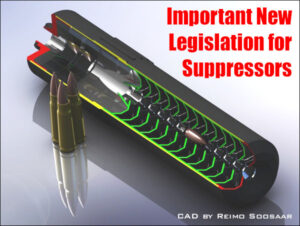April 25th 2023Slick tricks — Big batch case lube methods from the USAMUIn the past, the U.S. Army Marksmanship Unit posted weekly “how-to’ articles on the USAMU’s Facebook page. This USAMU article on case lubrication is very informative. The USAMU reloading team has developed efficient procedures for lubricating large numbers of cases. This article reveals USAMU’s clever lubrication methods for “big-batch”. Visit the USAMU’s Facebook page for more hand-loading advice on Wednesdays. Rapid, High-Volume, Case LubricationToday, we will discuss methods to quickly apply spray lube onto cartridge cases before sizing. This shop’s typical order is 25,000 rounds. [Speeding up] the case lubrication can save a lot of time. Although your ammunition loads are probably not as large, the methods described here can help you save time throughout your handloading career. Our case lubrication rate ranges from 1500-1600 to 2400-2500 per hour depending on the caliber. This shop uses virgin brass whereas most home handloaders utilize fired brass which can require some small adjustments at times. These will be discussed when they arise. Start with brass that has been cleaned by tumbling. Remove as much media as you can from the brass before using it in a size die. It is a good idea to use a tapered tool and round out any dents in the mouths of the cases to avoid damage from the decapping cylinder. Shake the bin so that the mouths of many cases are facing up. Pick up as many cases with the mouths “up” as you can from natural clusters that are correctly oriented. This is usually 3-4 cases for 7.62mm cases and up to 10 cases for 5.56mm. Place the cases in the rack slots with the mouths up. This is much faster if you do it in groups instead of individually. Once the clusters are gone, it’s time to shake the bin again to get more cases oriented “up”. This photo shows a USAMU staffer’s case lubrication holder.Adjust the spacing to fit the calibers that you reload. This size is convenient to handle through the various phases for case lubrication/transfer into progressive case feeders. Note that the angle of 1/2-inch does not cover the critical area of the case at the base just forward of extractor groove where the most resizing force is exerted. Note: The amount of lubricant applied with our rack is sufficient for our purpose. Use fired brass and lubricate the base area well to prevent cases from sticking in the full-length die. Spray lubricant on all sides of the cases. Make sure to lubricate the mouths/necks of the cases to reduce expander ball dragging and case stretching/headspace change. The spray lubricant used by this shop does not harm powder or primers, and it does not require tumbling after lubrication. *Look closely at the photo. The USAMU shop rotates the rack using a kitchen turntable. We put this in a box that prevents overspray onto walls and floors.
The following refinement to the above method will speed up processing of 5.56x45mm cartridges. A small cardboard box that holds 100 cases is fitted out with an angled “floor”. This is secured using tape. The smaller 5.56mm case can be picked up in a handful, already oriented correctly, and placed together into the box. This saves time by not having to place the cases into the rack slots. This method works well for our purposes – neck-sizing new brass and setting neck tension. If you are using fired brass, make sure to use enough lubricant to prevent cases from sticking. We hope this helps our fellow handloaders. Good luck and happy shooting! *This two-part test involved spraying heavily primed cases, while getting more grease into the mouth/body of the case than even an inattentive handloader could apply. The second part of this test involved spraying a large amount of lube into the cases and soaking the primers. After a few days of waiting for the lubricant to penetrate the primers they were fired in a test barrel. All fired normally, and no unusual reports were made. This gave us confidence that the normal amount of lubricant would not adversely impact our ammunition. We have been pleased with these results for several years.
















